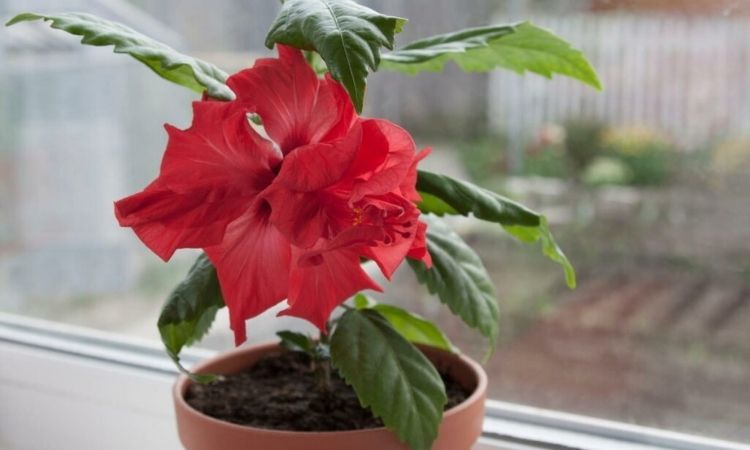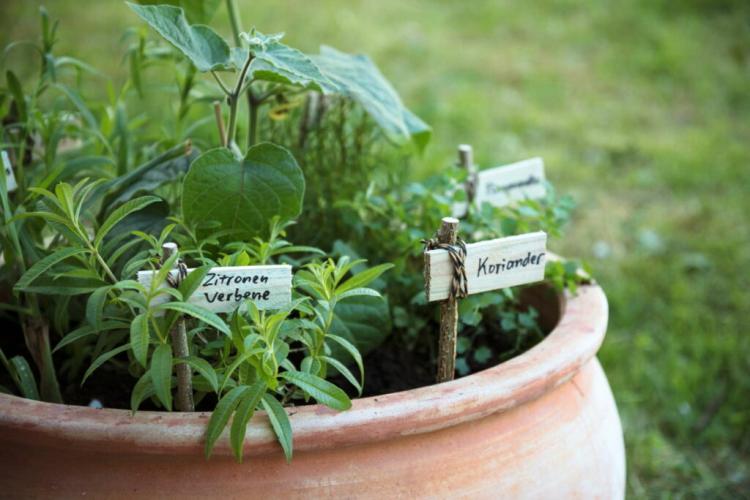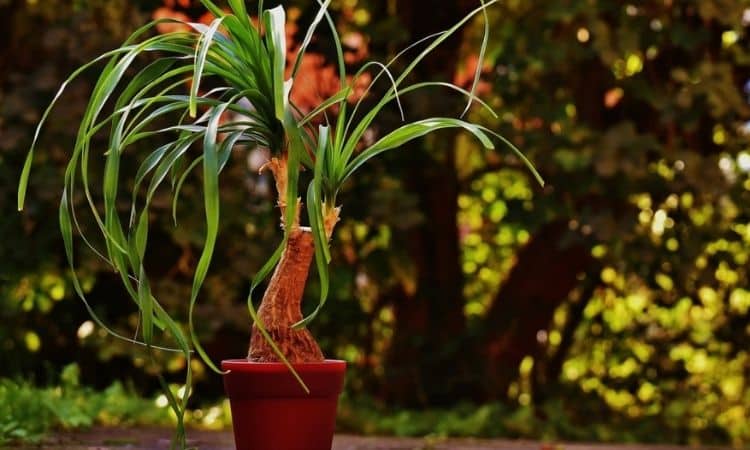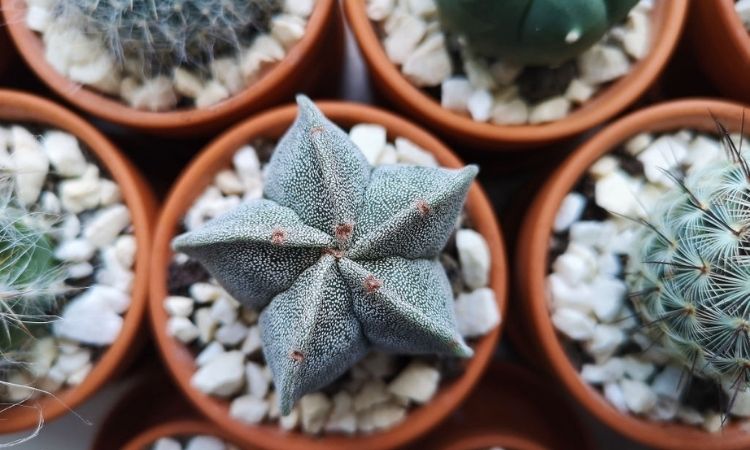Christmas Cactus (Schlumbergera): How To Care And Propagation
For the Christmas cactus to bloom abundantly in winter, it requires some care. Here you can find out how to care for your Christmas cactus properly. Even if they do not look like it, the species of Christmas cactus (Schlumbergera) are real Cactaceae. These wild species are native to tropical mountain regions in Brazil.
There they grow as epiphytes on trees and bushes or as lithohphytes on rocks. In our country, the Christmas cactus is mainly found in the form of hybrids. The crosses are usually based on the species Schlumbergera russelliana and Schlumbergera truncata – as in the case of the varieties of the most famous hybrid Schlumbergera x buckleyi.
How To Grow Christmas cactus
Table of Contents
The Christmas cactus grows very branched and dense. The thickened, leaf-like formations are not leaves, but so-called phylloclades. These are leafy shoot sections. With increasing shoot length (or some phylloclades) the Christmas cactus takes on its overhanging growth form. As typical for cacti, also the Christmas-cactus has so-called areoles.
These are side shoots reduced in growth, but from which side shoots or flowers can develop. With the here widespread cultural forms of the Christmas cactus, the thorns are missing mostly completely or are at least clearly reduced and are hardly noticeable.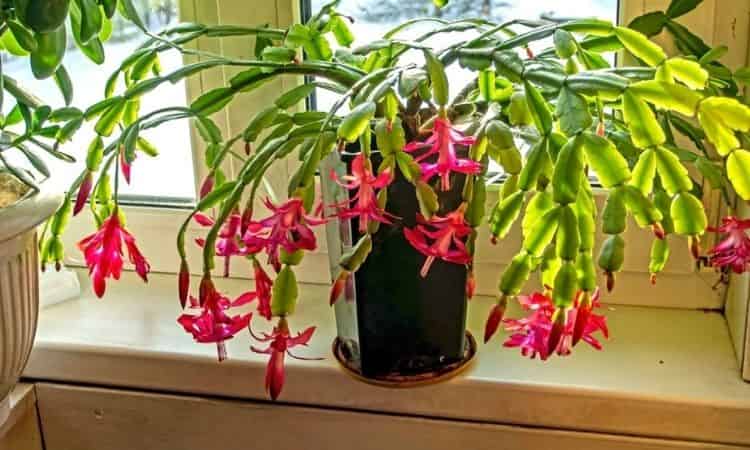
Christmas cactus: Proper care
So that the Christmas cactus grows magnificently and blooms richly, some care is necessary. So one must know that the Christmas cactus is a short-day plant. Also, it must be protected from too cool temperatures and the location should also be chosen carefully. We will take a closer look at the demands of the Christmas cactus below. Learn how to repot cactus.
Location And Lighting Conditions
Christmas cactus is a one hundred percent potted plant when grown in our latitudes. Since temperatures below 10 °C can already lead to considerable damage, it is by no means suitable for outdoor cultivation. However, it can certainly spend the summer months outdoors on a terrace or balcony. The leaf-shaped growing cactus needs to be protected from extreme sunlight and therefore enjoys a semi-shady location.
As temperatures drop, the Christmas cactus should take a seat on the windowsill. This should be chosen as bright as possible! Room temperature is the best for the flower development of the winter cactus.
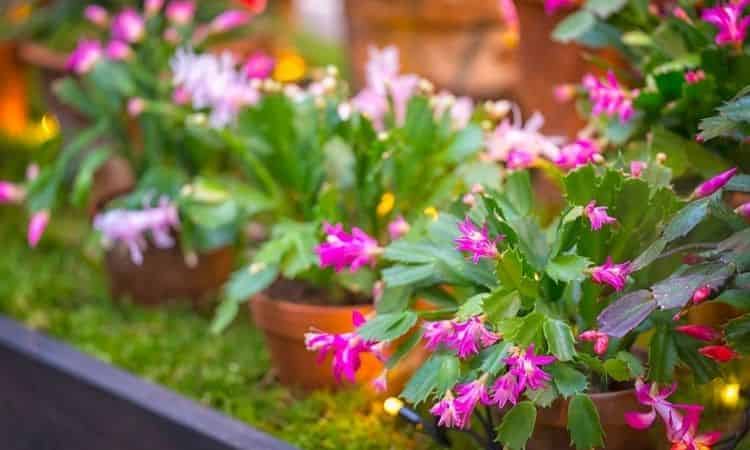
Under the following location and light conditions the Christmas cactus feels well:
- Avoid temperatures below 10 °C.
- In summer outside with a half-shaded location.
- With sinking temperatures into the house at room temperature
- During the time in the house as bright a location as possible
The right substrate and repotting
The Christmas cactus is a typical potted plant. However, it does not make any unusual demands on the substrate. It should be permeable to water and not tend to stagnant moisture. A commercially available substrate with a pH value of 5.5 to 6.0 is well suited – both with a certain amount of peat as well as peat-free. To ensure that the roots find an optimal environment, it is advisable to mix sand into the substrate in a ratio of 1:4 (1 part sand to 4 parts substrate).
However, to stimulate the growth of the Christmas cactus, occasional repotting is recommended. In fact, it doesn’t hurt to make the effort every year – the Christmas cactus will thank you for it. Repotting is done after the blossom – in spring. The new pot should be slightly larger than the previous one. The old substrate should be stripped off as much as possible.
Then the new substrate is poured on so that it will sit well and be in contact with the roots of the Christmas cactus. After repotting, there is no need to fertilize at first, because the nutrients contained in the substrate first cover the needs of the winter bloomer sufficiently.

The following points should be observed when selecting the substrate and repotting the Christmas cactus:
- Commercially available peat-free or peaty substrate with a pH of around 5.5 to 6.0
- Best mixed with sand: mix 1 part sand into 4 parts substrate
- Repotting recommended for good growth – after flowering
- Remove the old substrate as far as possible, select a new pot slightly larger
- After potting, pour on the new substrate
- Fertilization after repotting the Christmas cactus in a suitable substrate is not necessary at first.
Watering and fertilizing
A Christmas cactus should not be kept too dry, but waterlogging water will affect it much more. The substrate should therefore be permeable to water. During flowering, a short dormancy period should be allowed and the amount of water added should be reduced.
As soon as the Christmas cactus begins to sprout, water is added again at shorter intervals. Watering should also be reduced in autumn (October) to optimize flower formation. To prevent the pH-value from rising and thus hindering the growth of the Christmas cactus, watering should be done with rainwater if possible.
The nutrient requirement of the cactus plant is not excessively high. It is sufficient to supplement every four weeks with a complete nutrient fertilizer. From October onwards, the Christmas cactus should be prepared for flowering. Fertilization is discontinued and only resumed when the cactus sprouts again (around April).
In general, the correct watering and fertilizing of the Christmas cactus are essential:
- Never let Christmas cactus dry out
- Avoid waterlogging urgently
- Reduce watering between flowering and new shoots (spring) and in October before flower formation
- If possible, use rainwater so as not to raise the pH
- Fertilization every four weeks
- With the dormancy phase before flowering (from October) stop fertilizing until new shoots appear (April).
Cutting
In itself, a Christmas cactus does not have to be cut to be kept in shape. By nature, it already tends to branch out in a very animated way. However, over the years, growth can become a bit too droopy. Then you can reach for a knife. The best time to cut the flower is in early spring (around March).
Never cut in autumn, because then you run the risk of not being able to admire a flower in winter. The cut should always be made at the clearly visible point between two phylloclades. In this way, the cut is kept to a minimum and the Christmas cactus is treated as gently as possible. In early summer, one could combine the cutback with the cutting of the Christmas cactus.
In general, the correct cutting of the Christmas cactus is essential:
- Cutting the Christmas cactus is not necessary.
- Time: after flowering in March.
- Cut with a sharp knife at the clearly visible transition point between two phylloclades.
- Cut can be combined with cutting in early summer if necessary.
- Christmas cactus successfully brought to bloom.
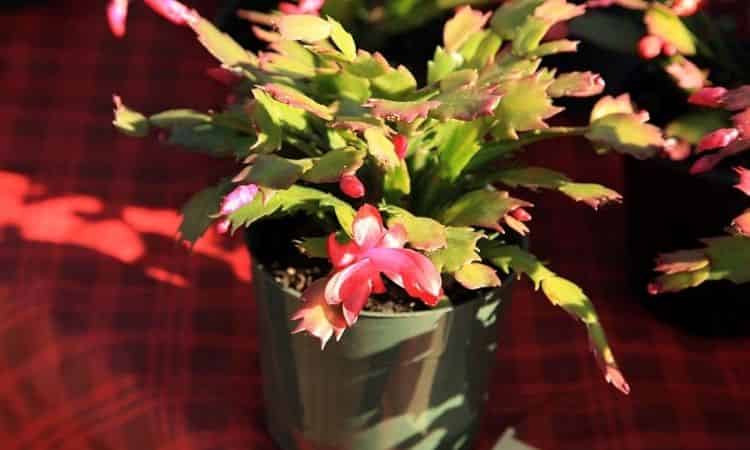
At rather low temperatures below 15 °C, flower formation occurs independently of the length of the day. However, the flower formation is hindered by too low temperatures around 10 °C. Temperatures above 22 °C, on the other hand, prevent flower formation regardless of the length of the day.
At normal room temperature around 20 °C, but better a few degrees Celsius cooler, the flowers of the Christmas cactus are only formed on a short day. In the case of the Christmas cactus, a short day means a maximum day length of 9 hours for at least four weeks. Disturbing light can hinder the flower formation or cause the complete loss of flowers. The light of a street lamp may be sufficient.
Therefore, the Christmas cactus should be cultivated in a room with only natural daylight. Or it is darkened after the appropriate duration of 9 hours of daylight, for example with a cardboard box, and protected from the influence of light. In the following way, you can make the Christmas cactus bloom again:
- Temperature and light in combination cause the blossom formation.
- Optimal flower formation and conditions for Christmas cactus at short day (9 hours of light per day) and 15 – 20 °C.
- Place Christmas cactus in a room with only daylight or darken it after 9 hours (e.g. with cardboard).
Successfully Bring To Bloom
In the first year, you buy the Christmas cactus (Schlumbergera x buckleyi) with numerous flower buds. However, also the cactus plant (Cactaceae) does not bloom permanently and loses its blooming power with the longer becoming days. This does not mean that the Christmas cactus must give way.
It can be brought through the summer easily and without much effort and bloom again in winter. First of all, of course, proper care until winter is essential. Ultimately, however, the interplay between the right temperature and suitable lighting conditions is also the decisive factor in successfully bringing the Christmas cactus to bloom.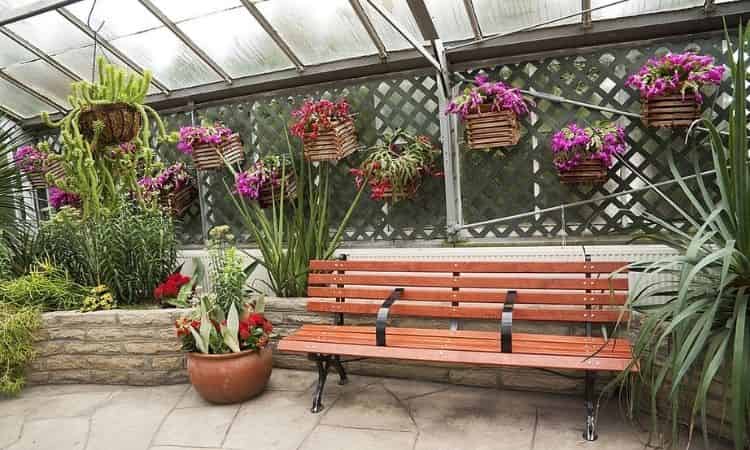
Christmas cactus: The Right Care In Summer
After the blossom is before the blossom – as in the case of the perennial Christmas cactus. After the blossom, the Christmas cactus first allows itself a short resting phase. Watering must be reduced and fertilization must continue throughout the entire flowering period.
If the Christmas cactus is to be given a larger pot, now is the right time for repotting. After all, the Christmas cactus will ring in the new growing season with the new shoots. Watering should be increased and fertilization (approximately every four weeks with a complete nutrient fertilizer) should be resumed.
If there is no longer a threat of frost, the winter cactus can also spend the summer outdoors. It feels most comfortable in a half-shaded location, as it does not tolerate direct sunlight so well. So the Christmas cactus spends the summer cheerfully outdoors. However, it is not worth planting it out, as it will have to move back into the house anyway at temperatures below 10 °C.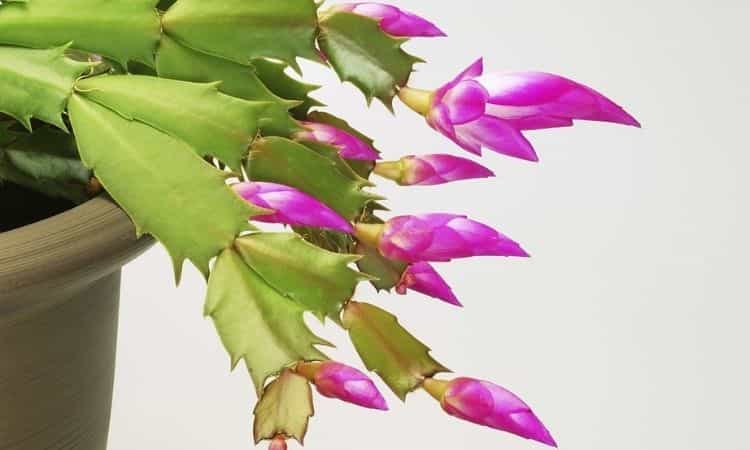
Generally speaking, the best way to take care of your Christmas cactus in summer is to plant it outdoors:
- After flowering, the resting phase, a good time for repotting
- Increase irrigation as needed with new shoots and resume fertilization (every 4 weeks with complete nutrient fertilizer)
- As soon as the temperatures allow it, the Christmas cactus can move outside for the summer (preferably not older than 10 °C)
- Half-shaded location – the Christmas cactus cannot tolerate full sun
- Do not plant out Christmas cactus
- As soon as the temperature drops, he has to move back into the house
Factors influencing the blossom
As soon as the Christmas cactus moves into the house due to the falling temperatures, the decisive phase of preparing the blossom slowly begins. The factors and length of day play a decisive role here. Irrigation should be significantly reduced from October. Slightly cooler temperatures of around 15 °C will help the desired flowers to develop.
Besides, the Christmas cactus is a so-called short-day plant. It is best if the plant has a maximum day length of 9 hours for at least four weeks. So you have the choice whether to place the cactus in a room where no disturbing light causes too long days or to always darken it. This can be done, for example, by putting a cardboard box over the plant on the windowsill and ensuring that no light shines through.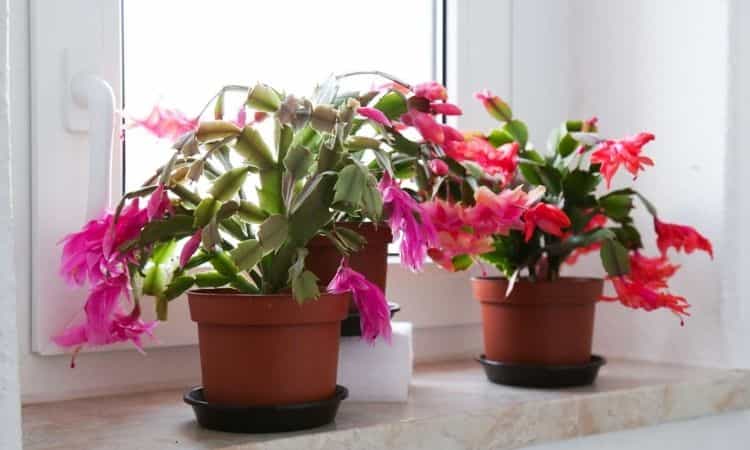
If the temperature is too cool (around 10°C), the length of the day no longer plays a role in the formation of flowers, but the formation of buds is generally more difficult. Temperatures above 22 °C prevent flowering completely. When the flower buds begin to form, the Christmas cactus can also move to a brighter and warmer location. This accelerates the development of the flowers. In general, the flowering of the Christmas cactus can be specifically influenced by the following factors:
- interaction between temperature and length of the day decides on flower formation
- From October, dormancy with lower temperatures, significantly reduced watering, and shorter day length to promote flower formation
- Temperatures around 10 °C: difficult flower formation independent of day length
- Temperatures above 22 °C: flower formation usually prevented
- OPTIMAL: Temperatures around 15 °C and short day (maximum day length of 9 hours)
- Darken, for example, with cardboard on the window sill or make sure that no light sources provide light for more than 9 hours
- As soon as the flower buds develop: a brighter location and optimal temperatures around 20 °C favour further development
- Adjust casting to requirements
Christmas cactus Does Not Bloom Or Drops The Flowers
Thus, some factors can lead to mistakes that can prevent the Christmas cactus from blooming. Therefore, we look again from the other angle and list what can have gone wrong if the Christmas cactus simply does not want to form flower buds:
- Ambient temperature too high (over 22 °C)
- Ambient temperature too low (around 10 °C)
- No short-day conditions of maximum 9 hours daylight à not darkened or disturbing light
- Stress due to incorrect pouring: too much pouring and maybe even causing waterlogging

The following causes can be responsible for the budding of the Christmas cactus:
- Too little light after the flower buds have developed.
- Too cool temperatures after the flower buds have been created – at least 15 °C is recommended.
- Too much water, which leads to stagnant moisture.
- Too little water and dryness.

